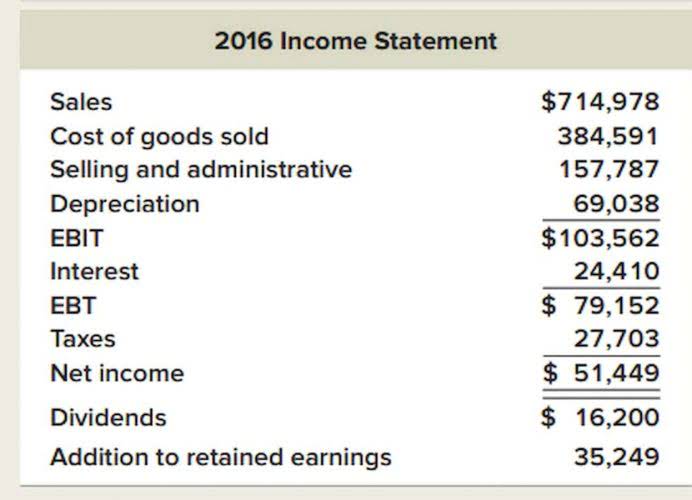
The key to tracking functional expenses is setting up processes and being disciplined with your bookkeeping. Allocating expenses is dividing overhead costs between all of the functions that are indirectly related to that cost. The square footage allocation example we used above is one common example of functional expense allocation. Natural expenses are categorized by their natural classifications– for instance, employee salaries, rent, utilities, maintenance, and the cost of supplies are all examples of natural expenses.

Statement of Activities
- Nonprofits may or may not be exempt from sales taxes, real estate taxes, and other taxes depending on which state in the U.S. they are incorporated or operate.
- This covers a one-time security deposit of $1,000 plus the February office rent of $1,000.
- The key to tracking functional expenses is setting up processes and being disciplined with your bookkeeping.
- However, creating interim reports can also be beneficial for internal management and planning.
- Costs that can be readily identified as pertaining to a specific category are charged directly to that function.
- However, nonprofit-friendly accounting software can help you make creating your Statement of Functional Expenses fairly easy.
- Whichever method is chosen, it should be decided on prior to the preparation of statements and should remain consistent from period to period.
The classification of management and general is reserved for expenses that are related to the overall operations of the organization. Expenses commonly categorized as management and general include salaries, insurance, staff meetings, accounting and professional services, and other administrative expenses. The U.S. Internal Revenue Service statement of functional expenses (IRS) requires some tax-exempt nonprofit organizations to file Form 990 (some can file Form 990-EZ) each year.
AccountingTools
The Financial Accounting Standards Board requires that all nonprofit businesses report their expenses based on both nature and function. In other words, nonprofit organizations must provide an analysis of how their resources were spent and for what purpose(s). While natural expenses show the type of expense incurred, functional expenses represent the purpose of the expenditure. Expensify provides real-time reporting and analytics tools that empower nonprofits to monitor and analyze their expenses on an ongoing basis. This allows organizations to proactively manage their finances, identify trends, and make informed decisions about resource allocation.

What Is a Statement of Functional Expenses? A Quick Overview for Nonprofits
Unlike for-profit businesses that exist to generate profits for their owners, nonprofit organizations exist to pursue missions that address the needs of society. Nonprofit organizations serve in a variety of sectors, such as religious, education, health, social services, commerce, amateur sports clubs, and the arts. The process of tracking the money you spend according to what the money was used for –such as fundraising, administration expenses, or actual programs. This method of expense reporting is most commonly used by non-profit organizations. It’s very unlikely that 100% is allocated to program services, but there are cases where a small portion Bookstime is necessarily allocated to supporting services. Either way, providing donors with transparency to drill down on the impact of their donation helps them make an informed decision.
- We are your source of nonprofit accounting software and nonprofit accounting software consulting services.
- (The depreciation journal entry includes a debit to Depreciation Expense and a credit to Accumulated Depreciation, a contra asset account).
- In this blog post, we’ll delve into the details of a statement of functional expenses, explain why it’s important, and provide you with a comprehensive template to simplify the process.
- A nonprofit organization can have each employee record how they spend their time– looking specifically at how much time is spent between fundraising, general management, and programs.
- Each statement of financial expenses should have various categories of financial outflows a nonprofit incurs.
Importance in Nonprofit Accounting
The result should be a useful, transparent display of expenses that are comparable. One of the main financial statements (along with the income statement and balance sheet). In addition to these direct purposes, the indirect benefit that the statement of functional expenses provides is increased transparency with donors and other stakeholders in your organization. This helps donors trust that you’ll handle their contributions appropriately, encouraging them to continue supporting you. Ultimately, it is both the not-for-profit’s requirement and benefit to accurately report its functional expenses.
- While donors expect to see most of a nonprofit’s expenditures allocated towards program services, they might question a very aggressive program services allocation.
- It contributes to the overall transparency and accountability of the organization’s financial activities.
- Functional expense reporting is the process of tracking the money you spend according to what the money was used for– like fundraising, administration, or programs.
- A nonprofit accountant creating a functional expense report for a nonprofit business first needs to classify each expense by its functional classification.
- A listing of the titles of the general ledger accounts is known as the chart of accounts.
- Another way to assess whether or not functional expenses are being accurately reported is to compare the functional expense allocations to other organizations within the same industry.
What Is Functional Expense Allocation?

You can improve decision-making by reviewing the data in your non-profit accounting software and comparing it to previous years when creating your annual operating budget. Following these requirements also enables you to provide transparency to contributors and regulators about how you used resources to achieve your organization’s mission. The statement of functional expenses, in terms of dollars and cents, shows what was accomplished (programs) and how (management and general and fundraising). Because the details of this report are highly dependent on your organization’s unique financial situation, pulling it together can be challenging.
There are 3 core functional expense categories:.
“The IRS Form 990 also mandates nonprofits to categorize expenses into Support Services and Program Services. These categories are then broken into the nature of the organization’s expenses. Natural classification relates to the economic benefits obtained from incurring these expenses. For example, an organization may incur travel expenses related to program services, fundraising and management activities.
Functional Classifications Versus Natural Classifications
In essence, it reveals how a nonprofit has decided to allocate its available funds in order to fulfill its mission. Welter Consulting bridges people and technology together for effective solutions for nonprofit organizations. We offer software and services that can help you with your accounting needs. Under the accrual basis of accounting, expenses are matched with revenues on the income statement when the how is sales tax calculated expenses expire or title has transferred to the buyer, rather than at the time when expenses are paid. The balance sheet reports the assets, liabilities, and owner’s (stockholders’) equity at a specific point in time, such as December 31.
